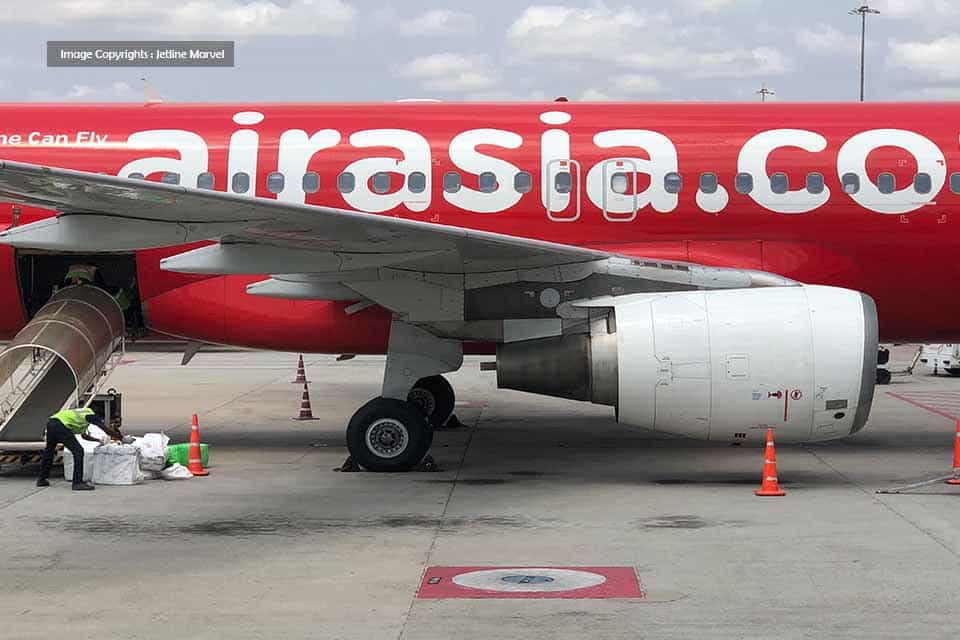Aerospace
AirAsia India to merge with Air India Express by end of 2023
The bold Low-Cost Carrier strategy from Tata will change the game.

Merger likely by end-2023; to be branded Air India Express Milestone in transformation agenda to bring in efficiencies and enhanced scale
New Delhi, November 02, 2022: Air India today announced that it has signed agreements to complete the acquisition of 100% shareholding in AirAsia India (AAI) and to subsidiaries it under Air India. An operational review process is underway with a view to ultimately integrating AAI fully with Air India Express (AIXL). Consolidation of these two airlines, both of which operate as low-cost carriers, will be undertaken as part of the restructuring roadmap that is being envisioned for the Tata group’s airline business and is expected to bring customer, revenue, cost, and operational benefits through broader adoption of each airlines’ best practices, systems and routes, and the combined entity’s greater scale.
Air India Express flight skids off runway while landing at Kochi airport(Opens in a new browser tab)
A working group has been formed to evaluate and execute the integration of the AI Group’s low-cost operations, which will be co-led by Sunil Bhaskaran, CEO & MD, of AirAsia India, and Aloke Singh, CEO, of Air India Express. The working group will report to a committee chaired by Air India MD & CEO, Campbell Wilson.
Tata’s 5-year plan to make Air India great again(Opens in a new browser tab)
The assessment and implementation of the full integration process of AAI and AIXL, through a possible scheme of merger or otherwise and subject to necessary corporate approvals, is expected to take approximately 12 months, with network and other synergies to be realized progressively during that period. Commenting on the development, Mr. Campbell Wilson, CEO & MD, of Air India. said, “We are excited to initiate the creation of a single Air India Group low-cost carrier. This is a key step in the rationalization and transformation of the Group, and we will be working closely with the management teams and staff throughout the process. We also look forward to the many new opportunities a stronger AI Group low-cost carrier will bring for customers and staff alike.”

Aerospace
Boeing Transfers Rocket Stage to NASA, Paving Way for Human Moon Mission

Boeing has achieved a significant milestone by providing NASA with the second core stage of the Space Launch System (SLS) rocket.
This crucial component, crafted at NASA’s Michoud Assembly Facility (MAF), is set to propel the Artemis II crew into lunar orbit, marking humanity’s return to deep space after a 50-year hiatus.
The monumental Boeing-built rocket stage, the largest element of the Artemis II mission, will embark on a journey aboard the Pegasus barge, traveling 900 miles to NASA’s Kennedy Space Center.
Comparison of two legendary aircraft B777x vs B747 aircraft:Click here
Upon arrival, it will be meticulously integrated with other essential Artemis II components, including the upper stage, solid rocket boosters, and NASA’s Orion spacecraft within the iconic Vehicle Assembly Building. This intricate integration process is a vital step toward the eagerly anticipated Artemis II launch, slated for 2025.
“Boeing-built products helped land humankind on the moon in 1969, and we’re proud to continue that legacy through the Artemis generation,” remarked Dave Dutcher, vice president and program manager for Boeing’s SLS program. “Together, with NASA and our industry partners and suppliers, we are building the world’s most capable rocket and paving the way to deep space through America’s rocket factory in New Orleans.”
NASA, Lockheed Martin Reveal X-59 Quiet Supersonic Aircraft:Click here
The delivery of Core Stage 2 marks a significant achievement in the evolution of the SLS rocket. Towering over 200 feet and powered by four RS-25 engines, this core stage, coupled with two solid-fueled booster rockets, will generate a staggering 8.8 million pounds of thrust. This immense power is crucial to launching Artemis II and future missions into the vast expanse of space.
The SLS rocket stands unparalleled in its capability to transport both crew and substantial cargo to the moon and beyond in a single launch. Its extraordinary capacity will facilitate the delivery of human-rated spacecraft, habitats, and scientific missions to destinations including the moon and Mars, ushering in a new era of space exploration.
-

 Travel1 week ago
Travel1 week agoAir India to Expand US Operations with Three New Routes After a Decade
-

 Travel2 weeks ago
Travel2 weeks agoWhy We Should Avoid These Stamps in a Passport
-

 Airlines1 month ago
Airlines1 month agoInvestigations Reveal Fake Chinese Titanium in Boeing and Airbus Jets
-

 Tech4 weeks ago
Tech4 weeks agoChina’s CATL Plans 1,800-Mile Electric Plane Launch by 2027
-

 Airport3 days ago
Airport3 days agoTop 10 Largest Airports in the World by Size
-

 Aerospace4 weeks ago
Aerospace4 weeks agoChina’s Fighter Jets Turn Wings into Autonomous Drones
-

 Airlines4 days ago
Airlines4 days agoAir India Rolls Out A350s for Delhi-New York JFK and Newark Routes
-

 Defence3 weeks ago
Defence3 weeks agoBoeing Enhances Chinook with New Engines and Block II Upgrades at $96 Million







